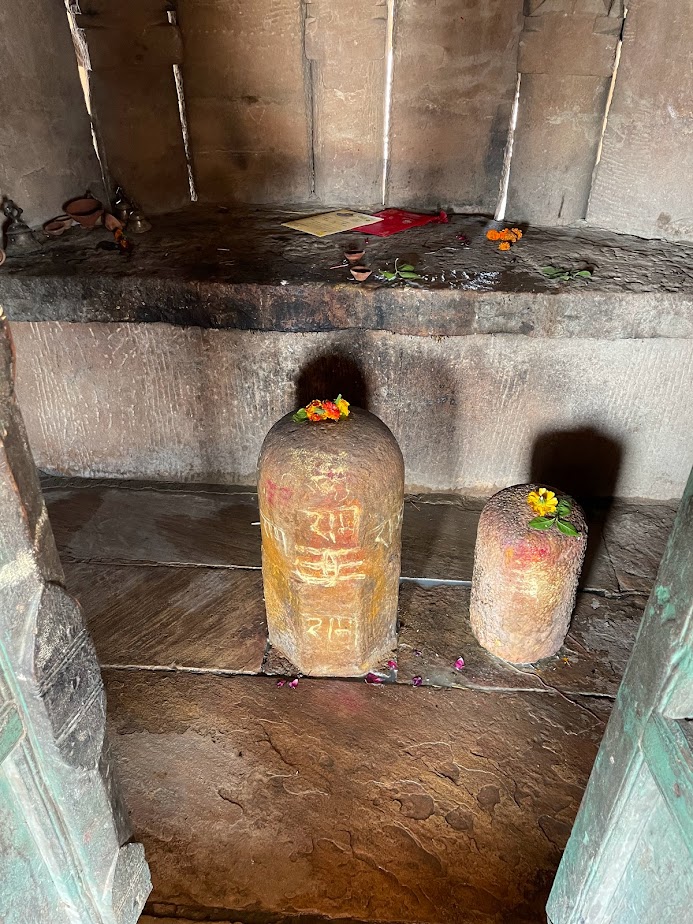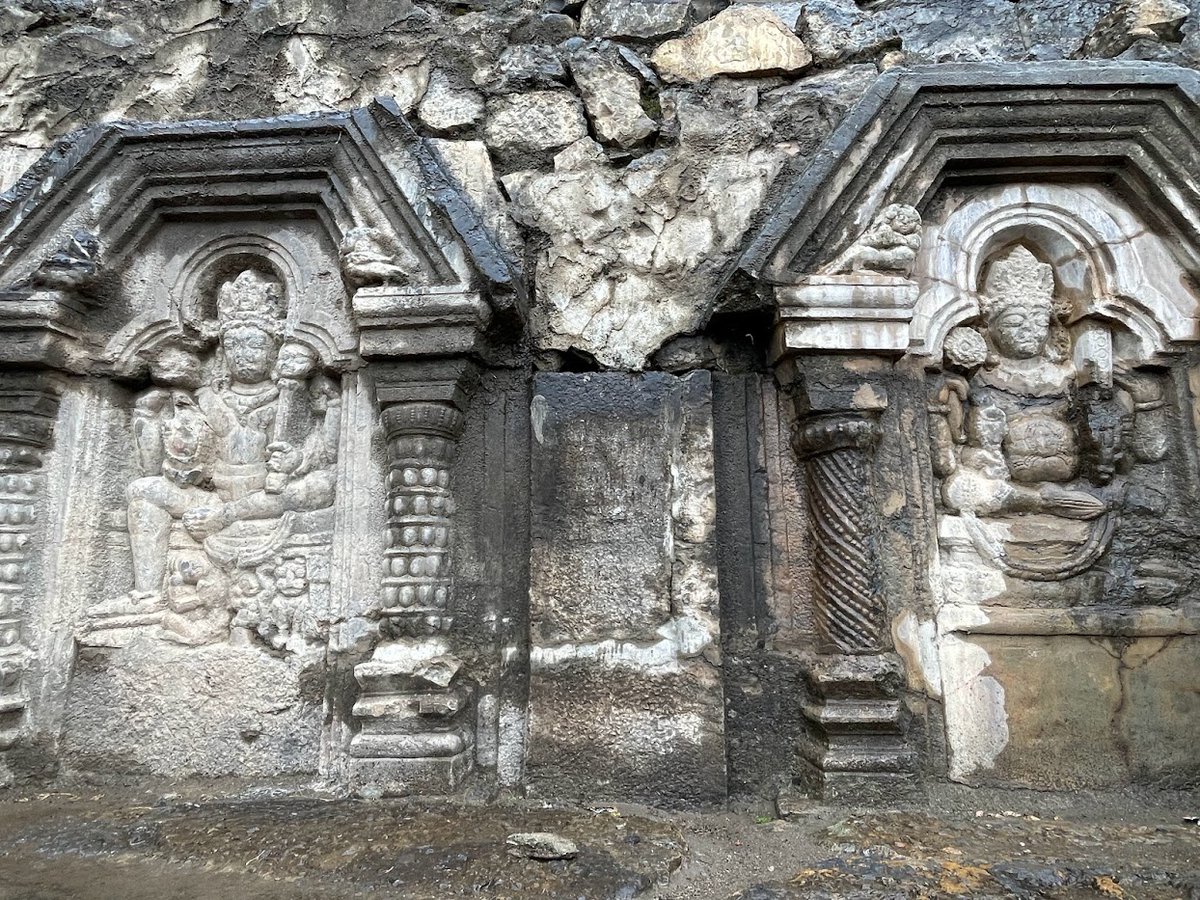Is Buddhism really lost from Bharat?
If as a Hindu you are visiting your religious sites you will definitely visit a Jain\ Buddhist or even a Gurudwara in the vicinity.
You pay your respects.
It comes naturally to us.
Your head bows down
Hands fold in gratitude
Eyes closed
&
You feel a deep internal connection & peace with the divine energy.
Buddhism might have declined but Buddha has found a special place in almost every home & every heart in India.
If as a Hindu you are visiting your religious sites you will definitely visit a Jain\ Buddhist or even a Gurudwara in the vicinity.
You pay your respects.
It comes naturally to us.
Your head bows down
Hands fold in gratitude
Eyes closed
&
You feel a deep internal connection & peace with the divine energy.
Buddhism might have declined but Buddha has found a special place in almost every home & every heart in India.
Some claim Buddhist temples were taken over by Hindus, well some of it is true but taking over feels like throwing the Buddhist monks & murtis out and then controlling them.
This isn't true in most of the cases barring a few.
This isn't true in most of the cases barring a few.
After the decline of Buddhism, most of its religious places were lost in time, when they were found much later there were hardly any Buddhists left to reinstate them.
The local population was Hindu, and these caves or temples were perfect places to continue the legacy of Idol worshipping.
Hindus moved their devtas too to these temples and all started getting worshipped together.
The local population was Hindu, and these caves or temples were perfect places to continue the legacy of Idol worshipping.
Hindus moved their devtas too to these temples and all started getting worshipped together.
This Hindu way of worship somehow kept these ancient worship places alive & safe.
If you visit Karla you can easily see 19th century Maa Ekvira temple on the same complex & it has become the main attraction there.
This has kept even the caves alive, and clean which might have gotten lost with time like Bedse & Kondana caves.
If you visit Karla you can easily see 19th century Maa Ekvira temple on the same complex & it has become the main attraction there.
This has kept even the caves alive, and clean which might have gotten lost with time like Bedse & Kondana caves.
Bharat was secular in the true sense, many Kings who were of other faiths never had issues with sponsoring a Hindu Buddhist Jain or Sikh temple.
They coexisted beautifully - You can witness it in Ajanta Ellora & Badami caves.
And now in 2023 a Jain (Vishnu Shankar Jain Ji) a lawyer fighting for Gyanvapi temple & another Jain ( Meenakshi Jain Ji) bringing out the real History tells a lot about the ethos of this country.
They coexisted beautifully - You can witness it in Ajanta Ellora & Badami caves.
And now in 2023 a Jain (Vishnu Shankar Jain Ji) a lawyer fighting for Gyanvapi temple & another Jain ( Meenakshi Jain Ji) bringing out the real History tells a lot about the ethos of this country.
So a Shiva idol in a Buddhist temple ( Or Shavism in Buddhism) or a Tirthankaran in a Vaishno temple would have been a norm for our ancestors.
This thread is completely my personal opinion, as per my understanding. If it doesn't fit in your ideology then please be polite while replying. Healthy debate is always welcome but abusers will be blocked
The decline of Buddhism in medieval India needs a proper thread which I will do in future.
This thread is completely my personal opinion, as per my understanding. If it doesn't fit in your ideology then please be polite while replying. Healthy debate is always welcome but abusers will be blocked
The decline of Buddhism in medieval India needs a proper thread which I will do in future.
On a lighter note, after interacting with many Jain friends here on Twitter I have realised the conflict between a Jain & a Hindu today isn't that they disagree with each other's philosophies.
But the fight is both sides claim that the recently dug Pratima \ a particular temple is theirs.
Both want to include the Pratima in their respective temples.
Both want to worship it.
Ideally, respective devtas should go to the temple of their original faith.
But this fight in a way is very positive, as both want to own these gods and not disown them, unlike some cultural attacks we have had in Past.
So whichever side has them, these Pratimas will be treated with respect.
🙏🙏🙏☮️
But the fight is both sides claim that the recently dug Pratima \ a particular temple is theirs.
Both want to include the Pratima in their respective temples.
Both want to worship it.
Ideally, respective devtas should go to the temple of their original faith.
But this fight in a way is very positive, as both want to own these gods and not disown them, unlike some cultural attacks we have had in Past.
So whichever side has them, these Pratimas will be treated with respect.
🙏🙏🙏☮️
Recently @PranavShah308 Ji shared a few videos of deserted Jain temples near Chandheri.
The group of temples is massive but in complete ruins now.
It hurts to see that video.
Wish Govtment and Jain community work together to bring them to a decent state.
This will give a complete facelift to the whole region.
The group of temples is massive but in complete ruins now.
It hurts to see that video.
Wish Govtment and Jain community work together to bring them to a decent state.
This will give a complete facelift to the whole region.
@threadreaderapp unroll
• • •
Missing some Tweet in this thread? You can try to
force a refresh

 Read on Twitter
Read on Twitter







































